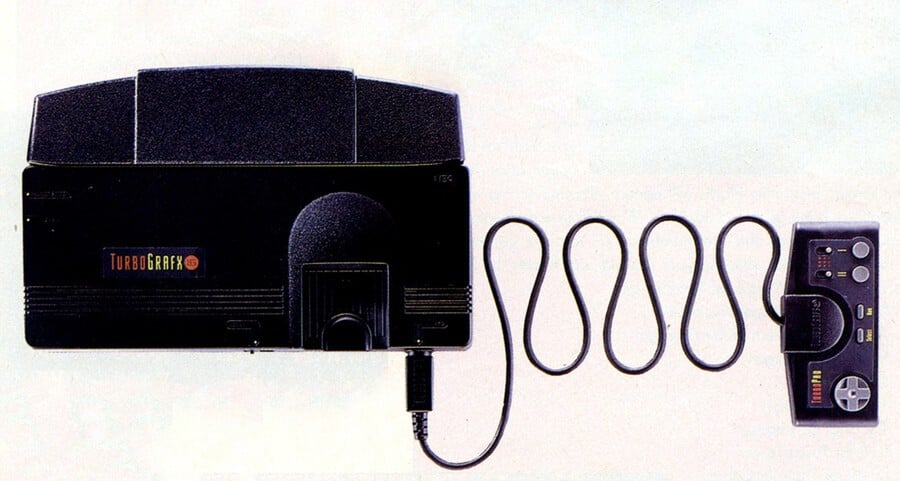
The PC Engine was a huge success in Japan, keeping Sega's Mega Drive / Genesis in third place and even challenging the might of Nintendo for a few years.
However, it's a system that struggled to achieve the same impact overseas, with its North American variant—the TurboGrafx-16—failing to make a dent in a market dominated by Nintendo and Sega.
There's one big question many people have, however—why was the TG-16 so much larger than the adorably dinky PC Engine if it contained the same tech?
I spoke to Ken Wirt—who served as Vice President and General Manager of the TurboGrafx-16 Group at NEC Home Electronics from 1989 to 1991—for Retro Gamer magazine many years ago, and he explained why this was the case:
In regards to the restyled shape of the machine, it was going to be sold at a relatively high price and the customers we asked questioned why something so expensive should be in such a small package. They believed that if it’s small it should cost less, not more. Of course, today, in the 21st century, we understand that smaller things sometimes cost more, and you pay a premium for that advantage.
Wirt also explained why the name was changed for the US market:
Prior to the launch, we did some market research with customers in the US, and we found that the name ‘PC Engine’ caused quite a bit of confusion. I think in Japan, the name was ok because it’s kind of an American phrase, and that had some cachet. In the US, ‘PC Engine’ was literally interpreted by customers as ‘Personal Computer Engine’. The name change came about because we tested a number of different options and the one that did the best was the one that described the main benefit of the product, which was the graphics. Hence the name: ‘TurboGrafx-16’. The ‘16’ related to the 16-bit graphic chips inside the machine.
NEC's next machine, the PC-FX, was only released in Japan and was a commercial disaster, effectively driving the company out of the games market. In recent years, the PC Engine name has been revived by rights holder Konami via a mini console based on the classic system. This was released in a TurboGrafx-16 design for the US market, and yes, they made it bigger than its PC Engine equivalent.
More recently, Analogue released the Duo, an FPGA-based clone of the TurboDuo / PC Engine Duo capable of playing HuCard / Turbo Chips and CD-ROM titles.
